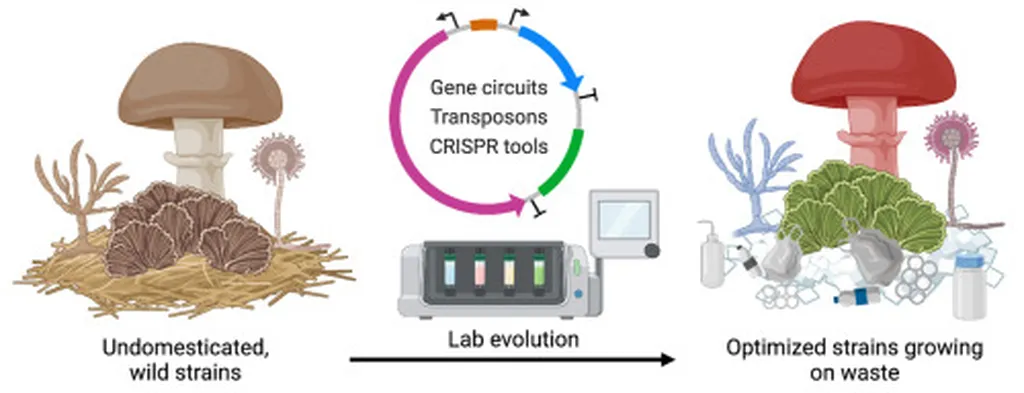In the heart of Shenzhen, China, a team of researchers led by Amechi S. Nwankwegu at Shenzhen University’s College of Life Sciences and Oceanography is unraveling the intricate dance of nature and technology, focusing on the often-overlooked world of fungal fruiting bodies. Their work, published in the journal *Microbial Biotechnology* (translated as *微生物生物技术*), is shedding light on the critical environmental factors that govern the development of these complex structures, with promising implications for biotechnology and industry.
Fungal fruiting bodies, the reproductive structures of ascomycetes and basidiomycetes, are not just mere mushrooms on a log. They are the result of a sophisticated interplay of hormonal regulation, gene expression, and metabolic processes, all influenced by environmental interactions. Nwankwegu and his team have been delving into the “critical environmental optima” that regulate these processes, aiming to understand how these factors can be harnessed for biotechnological applications.
“The fruiting body development is a principal mechanism in fungal morphogenesis,” Nwankwegu explains. “It’s a complex process that involves a multi-omics footprint, encompassing diverse molecular perspectives. Understanding this is key to optimizing the cultivation and commercialization of fungal fruiting bodies.”
The research underscores the importance of staying within these critical environmental ranges. Exceeding these ranges can trigger dynamic shifts that adversely impact the fruiting body’s eco-resilience. However, operating below these optima allows most physiological activities to maintain normal functioning and stability. This understanding is crucial for decision-makers looking to optimize the commercialization of fungal fruiting bodies.
The study also highlights recent advances in fruiting body biotechnologies, traversing agricultural and food applications, optimized cultivation strategies, environmental and health benefits, bioactive compound extractions, genetic engineering, and synthetic biology. These advances are promoting scalable bioproduction, a boon for industries looking for sustainable and efficient production methods.
But the journey doesn’t end here. The researchers propose further studies emphasizing omics-driven strain-substrate improvements and genomic modifications, incorporating CRISPR advances to boost precision cultivation and enhance robust strain design. This could pave the way for groundbreaking developments in the field, driving sustainable industrial biotechnology.
As we stand on the brink of a biotechnological revolution, Nwankwegu’s work serves as a beacon, guiding us through the complex world of fungal fruiting bodies. The insights gleaned from this research could shape the future of biotechnology, offering sustainable solutions for industries and a deeper understanding of the natural world.
In the words of Nwankwegu, “This study offers promising insights into complementing existing knowledge on fungal fruiting bodies and addresses challenges related to environmental complexity and uncertainties.” It’s a testament to the power of scientific inquiry and its potential to drive innovation and progress. As we look to the future, one thing is clear: the world of fungal fruiting bodies is far more than meets the eye, and its potential is only just beginning to be unlocked.

